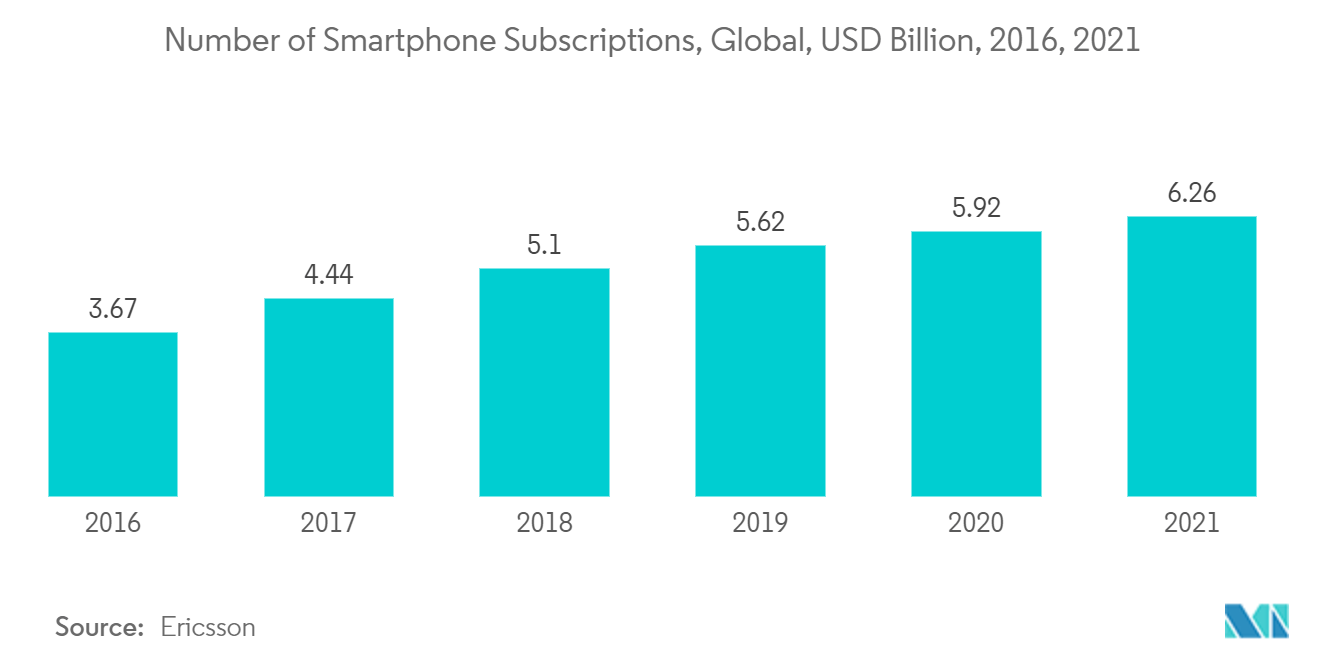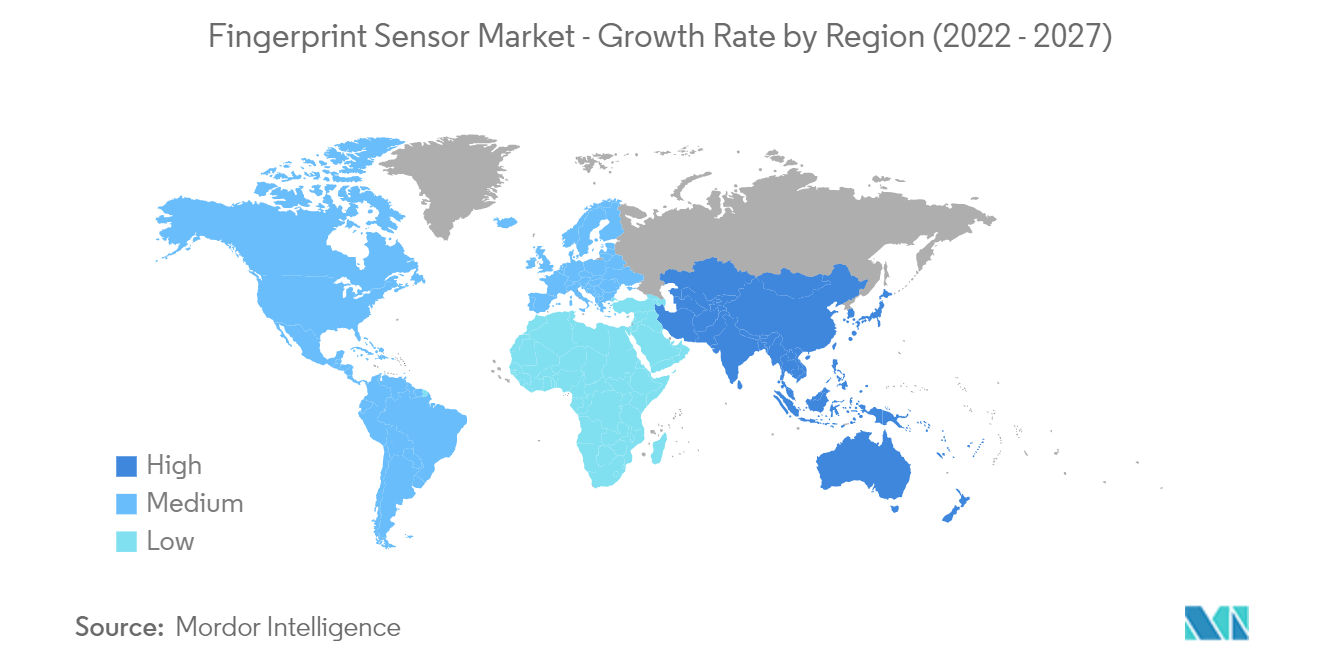Market Trends of Fingerprint Sensors Industry
This section covers the major market trends shaping the Fingerprint Sensors Market according to our research experts:
Applications in Smartphones is expected to Hold a Major Share
- The smartphone is the largest segment to utilize fingerprint sensors for user authentication among all the other devices considered in the study. The earliest application of fingerprint sensors in smartphones was in 2011 by Toshiba, but Apple touch ID revolutionized fingerprint sensors in mobile devices.
- Apple's Touch ID, based on capacitive technology, was accurate and easy to use, because of which the authentication of the user became fast and smooth. After Apple's success, Samsung and other major players also started using different fingerprint technologies for authentication.
- Regarding technology, the capacitive touchscreen sensors are being replaced by ultrasonic fingerprint sensors in premium phones and optical sensors in the rest of the devices. The shift from capacitive sensors has been due to the growing demand to integrate sensors in the display.
- On the other hand, Tablets have been using capacitive sensors, and many times to keep the bezels, many small manufacturers have opted not to use fingerprint sensors on their tablets. However, companies like Samsung, Lenovo, and Asus, have been using capacitive sensors in their tablets.
- The increasing penetration of smartphones is expected to create more opportunities in the studied market. For instance, Ericsson Mobility Report 2021 shows more than 5.5 billion new smartphone subscriptions.

Asia Pacific to Witness Highest Growth
- Increasing mobile transactions in China, coupled with the government's initiatives, are expected to be the major drivers for the fingerprint sensors market in the country. China is witnessing a high mobile transactional volume, expected to create the potential for the market studied.
- According to the China Internet Network Information Center (CNNIC), in 2020, around 852.5 million users used mobile payment transactions, which increased from 583.3 million users in 2018. such an increase in mobile payment transactions provides an increasing need for various fingerprint sensors.
- The company's continuous product innovations primarily drive the market for fingerprint scanners in Japan. For instance, in July 2021, Fingerprint Cards collaborated with Tokyo-based company MoriX Co. Ltd to develop and launch biometric payment cards in Japan. Fingerprints' T-Shape module, which boasts ultra-low power consumption and is customized to be integrated into payment cards using standard automated manufacturing techniques, will be featured on the cards. Adding biometric sensors to contactless payment cards improves security, cleanliness, and sanitation while increasing card payment.
- The Japanese companies in the automotive sector are also actively looking forward to integrating fingerprint sensors in their upcoming models. For instance, Nissan introduced its concept car Nissan Xmotion featured fingerprint biometric authentication for enhanced security of the vehicles.
- Fingerprint sensors are witnessing a significant demand in South Korea due to the increasing demand for biometric payment cards, and there is a robust market for payment cards. Various market vendors are currently working to integrate biometric technology. They will have a genuinely disruptive offering that will significantly expand the banking customer base in the country, various end-users, and beyond.

